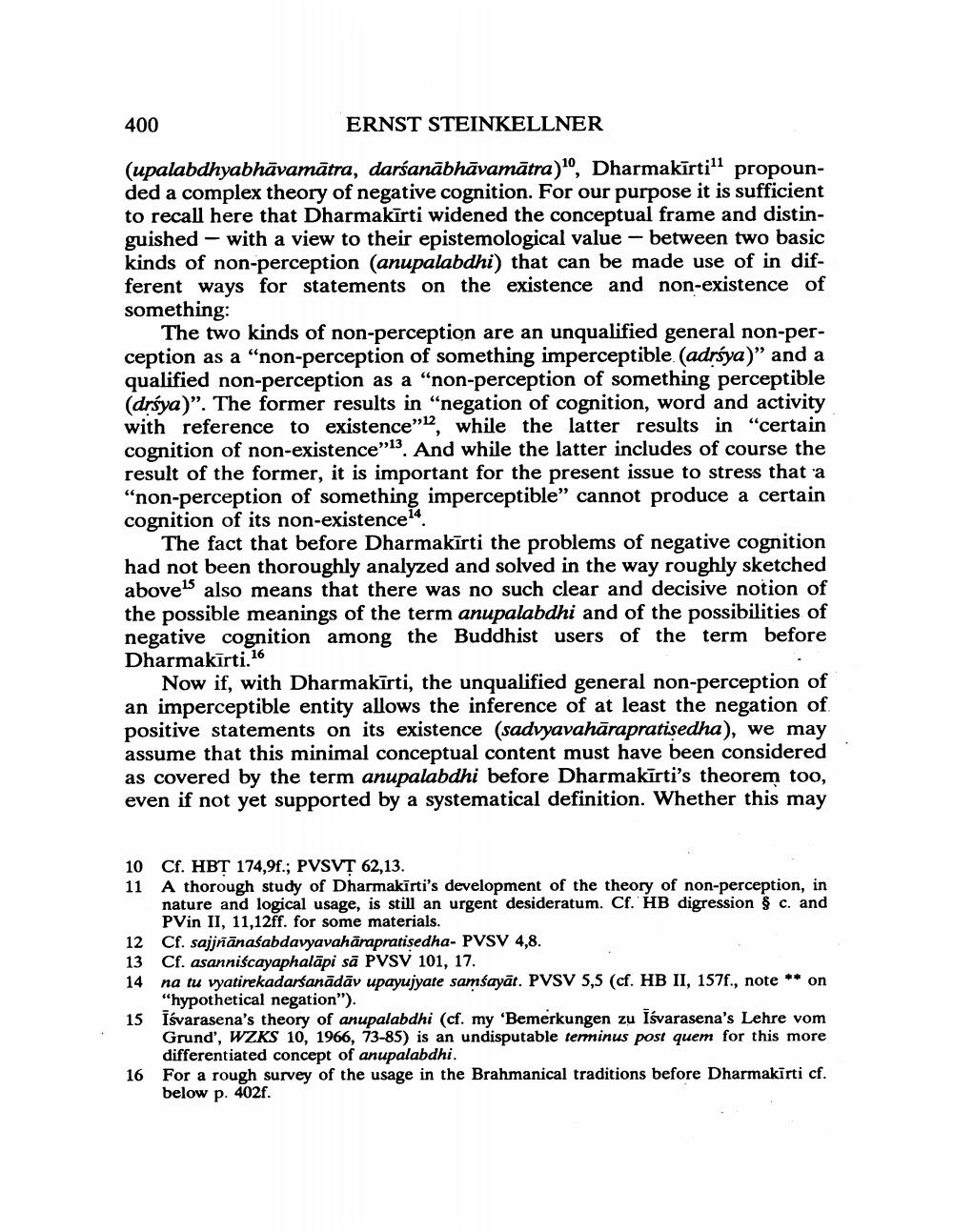Book Title: Lamotte And Concept Of Anupalabdhi Author(s): Ernst Steinkellner Publisher: Ernst Steinkellner View full book textPage 3
________________ 400 ERNST STEINKELLNER (upalabdhyabhavamātra, darśanābhāvamātra)", Dharmakirti" propounded a complex theory of negative cognition. For our purpose it is sufficient to recall here that Dharmakirti widened the conceptual frame and distinguished with a view to their epistemological value between two basic kinds of non-perception (anupalabdhi) that can be made use of in different ways for statements on the existence and non-existence of something: The two kinds of non-perception are an unqualified general non-perception as a "non-perception of something imperceptible (adriya)" and at qualified non-perception as a "non-perception of something perceptible (driya)". The former results in "negation of cognition, word and activity with reference to existence", while the latter results in "certain cognition of non-existence". And while the latter includes of course the result of the former, it is important for the present issue to stress that a "non-perception of something imperceptible" cannot produce a certain cognition of its non-existence The fact that before Dharmakirti the problems of negative cognition had not been thoroughly analyzed and solved in the way roughly sketched above's also means that there was no such clear and decisive notion of the possible meanings of the term anupalabdhi and of the possibilities of negative cognition among the Buddhist users of the term before Dharmakirti, Now if, with Dharmakirti, the unqualified general non-perception of an imperceptible entity allows the inference of at least the negation of positive statements on its existence (sadvyavahārapratiṣedha), we may assume that this minimal conceptual content must have been considered as covered by the term anupalabdhi before Dharmakirti's theorem too, even if not yet supported by a systematical definition. Whether this may 10 Cf. HBT 174,9f.; PVSVT 62,13. 11 A thorough study of Dharmakirti's development of the theory of non-perception, in nature and logical usage, is still an urgent desideratum. Cf. HB digression § c. and PVin II, 11,12ff. for some materials. Cf. sajjnanafabdavyavahärapratisedha- PVSV 4,8. 13 Cf. asanniscayaphalapi sa PVSV 101, 17. 14 na tu vyatirekadarśanādāv upayujyate samsayat. PVSV 5,5 (cf. HB II, 157f., note on "hypothetical negation"). 15 Isvarasena's theory of anupalabdhi (cf. my 'Bemerkungen zu Iśvarasena's Lehre vom Grund', WZKS 10, 1966, 73-85) is an undisputable terminus post quem for this more differentiated concept of anupalabdhi. 16 For a rough survey of the usage in the Brahmanical traditions before Dharmakirti cf. below p. 402f.Page Navigation
1 2 3 4 5 6 7 8 9 10 11 12 13
